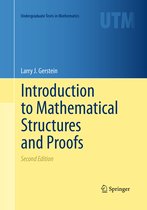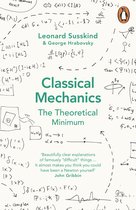Introduction to Tensor Analysis and the Calculus of Moving Surfaces
- Engels
- Hardcover
- 9781461478669
- 24 september 2013
- 302 pagina's
Samenvatting
This text is meant to deepen its readers’ understanding of vector calculus, differential geometry and related subjects in applied mathematics. Designed for advanced undergraduate and graduate students, this text invites its audience to take a fresh look at previously learned material through the prism of tensor calculus. Once the framework is mastered, the student is introduced to new material which includes differential geometry on manifolds, shape optimization, boundary perturbation, and dynamic fluid film equations.
Tensor calculus is a powerful tool that combines the geometric and analytical perspectives and enables us to take full advantage of the computational utility of coordinate systems. The tensor approach can be of benefit to members of all technical sciences including mathematics and all engineering disciplines. If calculus and linear algebra are central to the reader’s scientific endeavors, tensor calculus is indispensable. The language of tensors, originally championed by Einstein, is as fundamental as the languages of calculus and linear algebra and is one that every technical scientist ought to speak. The tensor technique, invented at the turn of the 20th century, is now considered classical. Yet, as the author shows, it remains remarkably vital and relevant. The author’s skilled lecturing capabilities are evident by the inclusion of insightful examples and a plethora of exercises. A great deal of material is devoted to the geometric fundamentals, the mechanics of change of variables, the proper use of the tensor notation, and the discussion of the interplay between algebra and geometry. The early chapters have many words and few equations. The definition of a tensor comes only in Chapter 6 – when the reader is ready for it. While this text maintains a reasonable level of rigor, it takes great care to avoid formalizing the subject.
The last part of the textbook is devoted to the calculus of moving surfaces.It is the first textbook exposition of this important technique and is one of the gems of this text. A number of exciting applications of the calculus are presented including shape optimization, boundary perturbation of boundary value problems, and dynamic fluid film equations developed by the author in recent years. Furthermore, the moving surfaces framework is used to offer new derivations of classical results such as the geodesic equation and the celebrated Gauss–Bonnet theorem.
This textbook is distinguished from other texts on the subject by the depth of the presentation and the discussion of the calculus of moving surfaces, which is an extension of tensor calculus to deforming manifolds.
Designed for advanced undergraduate and graduate students, this text invites its audience to take a fresh look at previously learned material through the prism of tensor calculus. Once the framework is mastered, the student is introduced to new material which includes differential geometry on manifolds, shape optimization, boundary perturbation and dynamic fluid film equations.
The language of tensors, originally championed by Einstein, is as fundamental as the languages of calculus and linear algebra and is one that every technical scientist ought to speak. The tensor technique, invented at the turn of the 20th century, is now considered classical. Yet, as the author shows, it remains remarkably vital and relevant. The author’s skilled lecturing capabilities are evident by the inclusion of insightful examples and a plethora of exercises. A great deal of material is devoted to the geometric fundamentals, the mechanics of change of variables, the proper use of the tensor notation and the discussion of the interplay between algebra and geometry. The early chapters have many words and few equations. The definition of a tensor comes only in Chapter 6 – when the reader is ready for it. While this text maintains a consistent level of rigor, it takes great care to avoid formalizing the subject.
The last part of the textbook is devoted to the Calculus of Moving Surfaces. It is the first textbook exposition of this important technique and is one of the gems of this text. A number of exciting applications of the calculus are presented including shape optimization, boundary perturbation of boundary value problemsand dynamic fluid film equations developed by the author in recent years. Furthermore, the moving surfaces framework is used to offer new derivations of classical results such as the geodesic equation and the celebrated Gauss-Bonnet theorem.
Productspecificaties
Inhoud
- Taal
- en
- Bindwijze
- Hardcover
- Oorspronkelijke releasedatum
- 24 september 2013
- Aantal pagina's
- 302
- Illustraties
- Nee
Betrokkenen
- Hoofdauteur
- Pavel Grinfeld
- Tweede Auteur
- Pavel Greenfield
- Hoofduitgeverij
- Springer-Verlag New York Inc.
Overige kenmerken
- Editie
- 2013 ed.
- Extra groot lettertype
- Nee
- Product breedte
- 155 mm
- Product lengte
- 235 mm
- Studieboek
- Ja
- Verpakking breedte
- 160 mm
- Verpakking hoogte
- 25 mm
- Verpakking lengte
- 244 mm
- Verpakkingsgewicht
- 812 g
EAN
- EAN
- 9781461478669
Je vindt dit artikel in
- Beschikbaarheid
- Leverbaar
- Boek, ebook of luisterboek?
- Boek
- Taal
- Engels
- Studieboek of algemeen
- Studieboeken
- Prijs inclusief verzendkosten, verstuurd door bol
- Ophalen bij een bol afhaalpunt mogelijk
- 30 dagen bedenktijd en gratis retourneren
- Dag en nacht klantenservice
Vaak samen gekocht
Rapporteer dit artikel
Je wilt melding doen van illegale inhoud over dit artikel:
- Ik wil melding doen als klant
- Ik wil melding doen als autoriteit of trusted flagger
- Ik wil melding doen als partner
- Ik wil melding doen als merkhouder
Geen klant, autoriteit, trusted flagger, merkhouder of partner? Gebruik dan onderstaande link om melding te doen.









